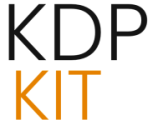
The Human Element: Quality Control and Authorial Agency
Here is where every author holds their breath: the quality. Pure, unvetted machine translation, especially for creative work, can be a comedic disaster or, worse, a serious affront to an author’s established brand. Amazon seems acutely aware of this potential landmine, integrating a two-pronged approach to quality assurance.
The Automated Accuracy Evaluation Protocol: A Digital Gatekeeper
To catch the most jarring errors—the semantic shifts, the context collapses, the awkward syntax—Amazon has built in a proprietary quality control layer. This is the automated accuracy evaluation. This mechanism scans the translated output post-processing to flag discrepancies or areas where the original meaning might have been compromised. [cite: 1, 9, 11]
While the specific algorithms remain under wraps (as you’d expect from proprietary AI), the function is vital: it acts as an initial vetting stage. It ensures the translated text meets a baseline standard for coherence and general accuracy before it ever gets in front of the author. For an author who does not speak Spanish or German, this step provides a fundamental layer of confidence, catching the most egregious, almost certainly published-in-error mistakes that would otherwise be unavoidable.
Authorial Control: Previewing the Global Product
The automated check is step one. Step two is giving the creator the final veto. Authors have two distinct pathways when the AI translation and its automated check are complete:
- Manual Preview Function: This is the cautious route. It allows the author, or a hired human editor fluent in the target language, to review the entire manuscript. This side-by-side or sequential review is essential for catching nuance, tone, and context that the AI inevitably misses—especially crucial for flagship titles or highly stylized prose. This is where you deploy human expertise strategically.
- Automatic Publication Toggle: For authors prioritizing rapid market entry, testing a new territory with minimal administrative overhead, or perhaps translating older backlist titles where immediate, high-fidelity nuance is secondary to sheer availability, this toggle grants permission to publish immediately upon passing the automated evaluation. [cite: 1]
This structure is brilliant because it allows authors to calibrate their involvement. Are you an author-as-editor for your newest release, or an author-as-passive-market-expander for your 2018 paranormal romance? The system lets you decide based on the asset’s value and your tolerance for potential minor machine-generated artifacts. You gain agency over the level of quality assurance you apply.
The Economic Earthquake: Reshaping Self-Publishing Finances
If the seamless integration is the convenience, the economic model is the catalyst. This is where the service stops being merely interesting and starts becoming a market disruptor. It tackles the single largest barrier to international success for self-published creators: upfront cost.
Zero Dollars to Go Global: Erasing the Financial Hurdle
Let’s be blunt: professional translation for a standard-length novel easily cost independent authors thousands of dollars. That outlay represented a significant, often prohibitive, capital risk for creators whose incomes fluctuate. Kindle Translate enters the equation and announces that, during the beta period, the service is provided at absolutely no direct cost. [cite: 6, 11]
This immediately transforms the risk-reward calculus for market exploration. Testing the waters in the massive Spanish-speaking market is now a zero-capital decision—a simple click. You are no longer making a high-risk financial gamble to gauge interest; you are performing a low-risk, data-gathering exercise. This democratization of global access is, quite frankly, a massive stimulus for the entire independent sector. The company’s figures suggest less than 5% of titles on Amazon.com are currently available in more than one language—a vast, untapped reservoir of potential consumers waiting for content. [cite: 9, 11]
Backlist Revitalization and Revenue Diversification
The impact goes far beyond just your newest release. Consider your entire backlist—those older titles that have settled onto page 40 of search results in their original language. By translating these established works, you give that entire catalog a functional “second life” in entirely new linguistic markets. An older series that peaked three years ago in the English storefront can suddenly become a fresh discovery for readers in Madrid or Buenos Aires, generating continuous, passive income from material you’ve already written and paid for. [cite: 2, 5]
This capability reframes your published repertoire as a diversified asset portfolio. Revenue generation is no longer solely tethered to the performance of your latest launch. The potential earnings aren’t just additive; they can become multiplicative, as increased visibility across multiple languages often creates a virtuous cycle, driving overall interest back to your entire body of work. Early adopters have noted this explicitly. Kristen Painter stated that foreign translations “give my titles a second life” and are “one of the smartest ways to expand both reach and revenue.” [cite: 1, 5] This is the realization of a dream that was previously gated by an insurmountable economic wall.
Marketplace Integrity and Visibility Perks
When you introduce technology this powerful, the market—both readers and authors—will demand transparency and assurance that the quality isn’t being sacrificed for speed. Amazon has addressed this with explicit labeling and by ensuring the translated works aren’t exiled to a publishing Siberia.
Clear Labeling: Transparency for the International Reader
Trust is the currency of digital retail. To maintain it, Amazon is enforcing overt signaling. Every eBook produced via this pipeline will carry a distinct and easily identifiable label: a Kindle Translate title designation. This is vital for setting reader expectations regarding potential stylistic variations or artifacts inherent in machine-generated prose. [cite: 1, 9, 10]
More importantly, transparency is facilitated right at the point of sale. Prospective buyers can access a sample section of the translated text directly from the product page. This is a powerful mechanism. It empowers the reader to perform their own quick fluency check before they commit money. By proactively signaling the nature of the content and offering a preview, Amazon attempts to strike a necessary balance between the efficiency of rapid global distribution and the ethical imperative of honesty with the end-user.
Visibility Multiplier: Full Integration with KDP Select
Perhaps the most overlooked practical benefit is what the translated edition avoids: being treated like a second-class citizen. Crucially, books generated via Kindle Translate remain fully eligible for enrollment in KDP Select, meaning they can be included in the massive Kindle Unlimited subscription service. [cite: 2, 3, 10, 11]
This is paramount. KDP Select enrollment is often the primary engine for discoverability and steady page-read royalties for a huge swath of self-published authors. By ensuring the Spanish or German edition can access the Kindle Unlimited pool, the platform guarantees that your new global reach translates immediately into access to established monetization and visibility mechanisms. The minimal administrative effort invested yields a return augmented by Amazon’s most popular content promotion engine. For authors looking to seed a new market, having a title in KU can drive initial discovery in a way that standalone retail purchases simply cannot match.. Find out more about Kindle Translate service for self-publishing authors tips.
The Consensus: Bridge or Replacement for Human Expertise?
The industry reaction has been polarized, yet a pragmatic consensus is beginning to emerge among those who work with the technology every day. The speed and cost-effectiveness are intoxicating, but literary translation is an art form that still resists total automation.
Voices from the Beta: The Initial Wave of Endorsements
The early feedback from the select group of beta testers has been overwhelmingly positive, precisely because it addresses a long-ignored market vacuum. Established independent voices have publicly thrown their support behind the service. Roxanne St. Claire noted the historical lack of a “cost-effective and trustworthy solution” for foreign language translation. Fellow author Kristen Painter echoed this, framing the tool as a way to finally bring their intellectual property to international readers without the crushing overhead or the need for highly specific, often restrictive, traditional publishing contracts. [cite: 1, 4, 5]
The consensus among these early adopters is that this is not just about adding new readers for a new book. It’s about giving the entire back catalog a significant, revenue-generating second wind, translating older works into fresh income streams from demographics previously walled off by language.
The Bridge Strategy: When to Use AI and When to Hire the Pro
So, is the professional human translator obsolete? The short answer, as of November 2025, is a resounding no, especially for the most valuable assets. Industry observers generally view Kindle Translate not as a total replacement for human expertise, but as an essential bridge or preparatory tool. [cite: 9]
The smart strategy, the one gaining traction, is a dual approach:
- Utilize Kindle Translate for: Rapid backlist expansion, low-stakes market testing in emerging territories, and securing distribution where sheer availability is the main goal.. Find out more about Kindle Translate service for self-publishing authors strategies.
- Utilize Human Translators for: Flagship releases, books aimed at critically acclaimed success in highly competitive international markets, or any title where capturing the precise cultural resonance and stylistic flair of the author’s voice is non-negotiable.
- Operational Simplicity Wins: Leverage the native KDP integration. You don’t need to hire a project manager for translations anymore; the KDP dashboard is your new global headquarters.
- The Backlist Gold Rush: Your oldest, lowest-selling titles in English are often the highest-potential candidates for AI translation into Spanish or German. They have proven market appeal, and the cost to test them is zero. This is prime backlist revitalization territory. [cite: 2]
- Calibrate Your Quality Control: Decide your strategy *before* you submit. If it’s a flagship title, plan to use the Manual Preview function and hire a professional proofreader for the target language. If it’s a backlist title or a quick market test, trust the automated evaluation and the auto-publish toggle to get you to market fast.
- Harness the KDP Select Multiplier: Always enroll your translated editions in KDP Select if you can. Access to Kindle Unlimited readers is an immediate, powerful visibility boost that traditional translation services never offered. [cite: 10, 11]
- Stay Informed on Language Rollout: The current set is English/Spanish/German. Keep an eye on KDP announcements, as the pace of language additions will dictate your next market expansion opportunity. For more on the evolving landscape of, keep an eye on these developments.. Find out more about Seamless integration within Kindle Direct Publishing ecosystem definition guide.
This new utility lowers the baseline cost of entry so significantly that it allows human expertise to be deployed more strategically—where it matters most for brand equity and premium pricing—rather than being required for every single catalog title just to get a digital toe in the global water. For further reading on the evolving role of human expertise alongside AI in creative fields, you might look into analysis on.
The Long View: Strategy and Market Transformation
To understand the true gravity of Kindle Translate, you have to step back and view it within Amazon’s broader corporate chessboard. This is not a side project; it’s a calculated piece of a much larger game.
Amazon’s Ecosystem Lock-In via AI Infrastructure
This launch is a textbook example of Amazon’s long-term strategy: use superior, proprietary computational infrastructure to create unique value propositions that competitors simply cannot match without equivalent access to massive, integrated data sets and neural networks. By continuously injecting powerful, free-to-use, AI-driven features directly into the KDP workflow—a pattern we see mirrored in other Amazon creator tools—the company systematically increases the switching cost for its primary content providers. [cite: 11]
The service solidifies Amazon’s position as the indispensable central hub for self-published digital distribution. The growth of the ecosystem, driven by this new influx of multilingual content, directly translates into enhanced platform stickiness. You aren’t just publishing a book; you are investing time and metadata into the Amazon ecosystem. When you can translate your entire career catalog for free inside that ecosystem, leaving becomes exponentially more difficult. It’s a competitive moat built with machine learning.
Anticipated Expansion and the Future of Global Ebook Sales. Find out more about Kindle Translate service for self-publishing authors overview.
Looking ahead from November 2025, the trajectory points toward comprehensive global coverage. As the underlying models continue to train on more data and receive user feedback, the system is expected to rapidly onboard more languages, systematically targeting large, underserved linguistic populations. This could unlock hundreds of millions of new, active eBook consumers previously limited by access friction to English-language content.
The long-term implication for the global book market is an expected acceleration in digital literature consumption. For Amazon, this means a more robust, geographically diverse, and resilient revenue stream, fostering deeper subscriber loyalty in territories outside the traditional English-speaking core. A short time ago, an author’s global strategy involved complex rights negotiations; soon, the standard expectation for any successful self-published title may shift to being available in five or more languages, with Kindle Translate acting as the primary engine for this new global publishing standard. The erosion of language barriers is accelerating, and it looks like it’s being powered by Amazon’s proprietary chips.
Key Takeaways and Actionable Next Steps for Authors
This service is a verifiable shift in the landscape. Don’t just read about it; act on the intelligence. Here are the essential takeaways and what you can do starting today:
Kindle Translate is a utility designed to eliminate a massive capital barrier and simplify logistics for the creator economy. It forces us to re-evaluate what “global reach” means for an author who only writes in one language. The platform has effectively turned market testing into a nearly cost-free activity, betting that the sheer volume of new content it pulls onto its digital shelves will generate more consumer spending across its entire ecosystem than the operational cost of the service.
The power is now literally on your dashboard. The only question remaining is: which new language market will you conquer first?
This information is confirmed current as of November 10, 2025.
. Find out more about Erasing financial barrier to international market entry for authors insights information.




